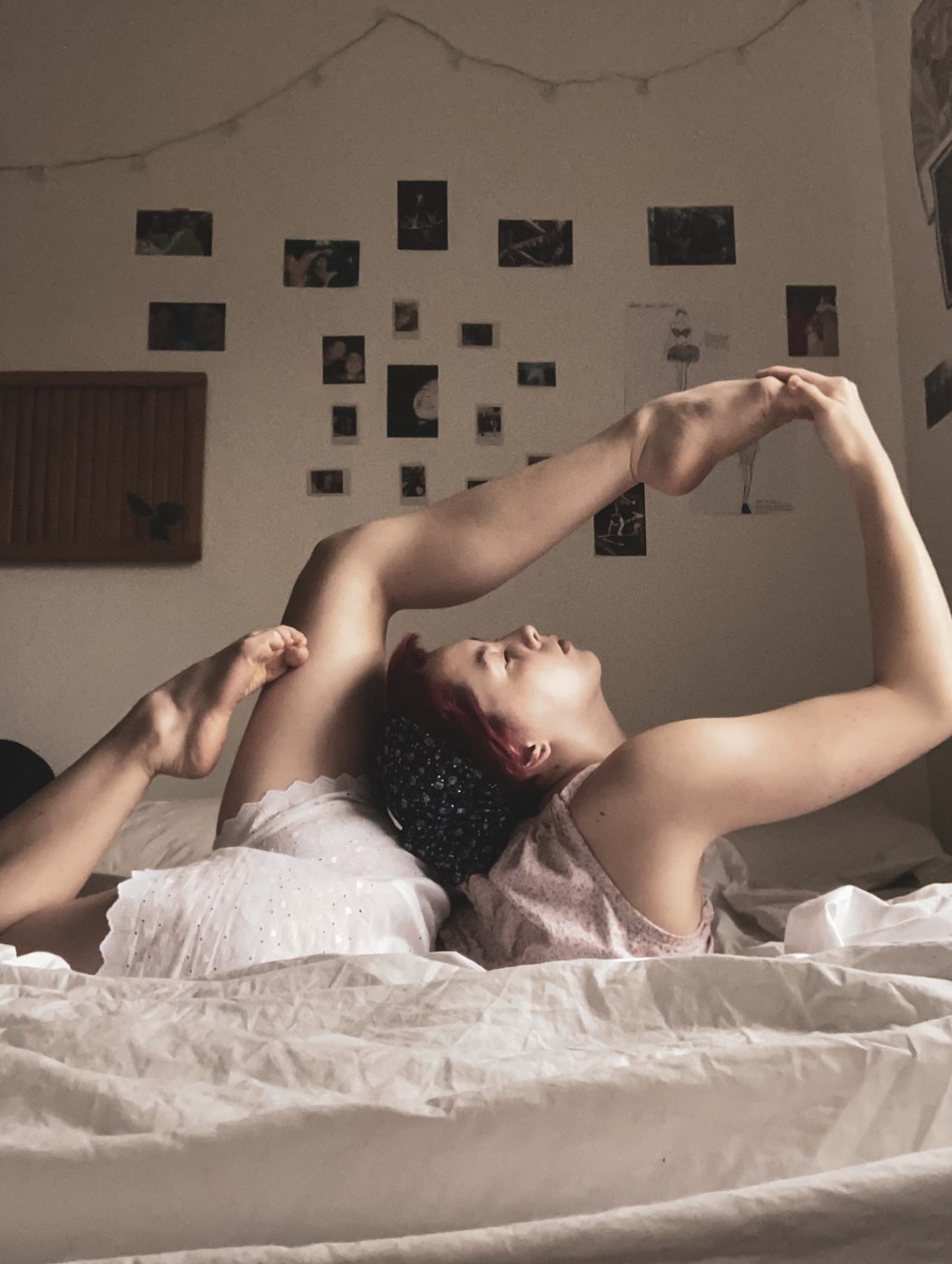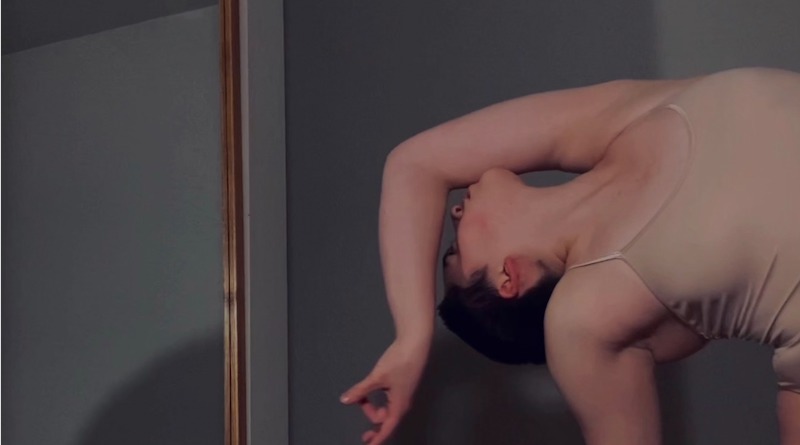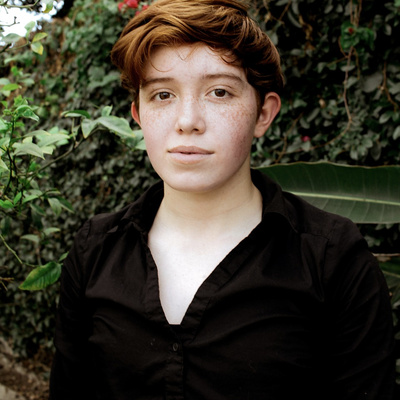What Does the Future of Circus Look Like for Young Transgender Circus Artists?
The COVID-19 pandemic has changed the circus industry. With the shutdown of in-person entertainment and many circus studios, the future for many circus artists is up in the air. As a trans circus artist who is also currently in high school, I am looking towards my future career with a lot of uncertainty. Circus is everything I want to do with my life, but I have noticed that the current (or pre-COVID) circus world is quite inadequately populated with trans circus artists. However, I believe circus is in for a gender revolution of sorts in the upcoming years, with a rise in trans youth all throughout society. I reached out to some fellow young trans circus artists to ask them for their thoughts on the future of circus and their place in it.
Izzi Kessner: What is your name, age, pronouns, how you identify yourself, location, and discipline(s)?
(E) My name is Eir Ólafs, I am 18 years old and I use they/them pronouns. I am Icelandic, asexual, and mainly a contortionist when it comes to circus arts.
(U) My name is Úlfgrímur, I am 17, and I use he/him pronouns. I am a trans man and bisexual. I am from Iceland, and I train rola bola and duo acro.
(N) My name is Noah. I’m 16 years old, my pronouns are he/they, and I’m a nonbinary transmasc. I’m from Massachusetts, USA and I do mostly handstands/acro and some aerial.
(S) My name is Saffi Watson. I am 19 years old and I use they + she + he pronouns. I am a trans non-binary circus artist from Seattle, Washington and I am currently attending Ecole Nationale de cirque (ENC) in Montreal, Quebec.
IK: Growing up, what has been your inspiration in circus– shows, companies, people, acts, etc.? Have you seen any representation in that inspiration for trans circus artists?

(U) A Finnish circus once came to town when I was young and I was completely mesmerized. There was a Cyr wheel artist who had a beard and wore a dress and that act is really the only one I can recall. Then there have been a few times where a circus act has impacted me so deeply that I went into a life crisis and had to rethink my purpose in life.
(S) Growing up, I spent a lot of time learning, training and performing… I had many wonderful coaches to look up to who were not only amazing artists and athletes but also generous and very kind-hearted people. I also grew up watching lots of performance art. All of the artistic experiences that I have as a result of how creative my family members are give me inspiration. They encourage me to keep exploring whatever makes me feel empowered and they love to see me feel motivated by my own artistic creations…I haven’t seen much of any public representation of trans identity in circus performance yet.
(N) When I was younger the only circus I ever saw was Circus Smirkus. More recently, I’ve seen more modern circus and dance shows, as well as following people and companies on social media. Many circuses/artists that I have seen had androgynous elements and blurred the lines of traditional gender roles, but until I joined social media I saw no outright trans representation, and even then I’ve had to search for it.
IK: How has your trans identity and circus intersected in your work?

(E) Because of my gender dysphoria I feel very disconnected from my body. I don’t feel like it’s mine, and I try to ignore it’s existence when I can. But when I am doing contortion, it is one of the few moments when I feel a connection between myself and a connection between myself and my body, we are working together for once… I would like to test the limits of myself and get to know my limits. I would also like to defeminize flexibility if that is possible. I would hate it if people looked at me performing and thought of me as a girl conforming to the feminine gender.
(U) I think that being in circus helped me realize that I was trans, because I wanted so much to be like some of the people there, but only the men…I think that the dysphoria has definitely limited me and the ways I feel comfortable expressing myself on stage. I also stopped in aerials due to it only being girls there but was too scared to learn to juggle, as there were only boys. I am so very happy with the discipline I chose and I wouldn’t want to change, but I think that it’s unfortunate that I didn’t start to learn anything other than being on the rolla bolla, simply by being unconsciously an outcast and not fitting in.

(S) I just recently publicized my trans identity so I’m pretty new to the intersection of circus and the publicity of my trans identity. I use Instagram as a creative outlet and tool to share my thoughts and ideas with people, and I have started posting some content about trans identity. I’ve also created circus numbers or little videos that could be interpreted however the public perceives it, but internally I was creating the piece based on trans and non-binary identity.
I enjoy sharing art in which the audience can choose to create their own narrative while they take it in, but let my work guide them to further connect with their personal thoughts.
I have goals to make the circus world a more welcoming and comfortable place for trans people to be able to express themselves however they want.
IK: Where do you imagine yourself ending up in circus? What is your dream act/show/project?
(S) I imagine myself touring around the world performing and teaching circus arts with contemporary circus companies, and I also see myself starting a small collective contemporary circus company with my friends. I love how personal circus art is when I create it with my best friends. I have goals to make the circus world a more welcoming and comfortable place for trans people to be able to express themselves however they want. I want to make being trans less scary and more inspiring for the trans kids who are entering a scary world.
I dream of putting on a drag circus act.
(U) I plan on going to a circus university abroad and I definitely want to do circus professionally. I have no idea where I will end, here in Iceland helping the small community grow or somewhere else. I think that I will be stealth in the school and I know that it’s sad but I am terrified of getting attacked or made an outcast for being trans. I won’t go until I have gotten top surgery and “pass”, which would be fine if it were 100% for my own comfort, but it is also undeniably to make it easier and not be visibly different. It is of course a massive privilege to be able to be stealth, being binary and all, and I really wish I wouldn’t feel like it’s a necessity to be stealth.
I dream of putting on a drag circus act. One day when I will feel comfortable enough in my body and self, I will make the best fucking drag performance that the world has seen.
IK: In what ways does the circus world have to change to be more open to trans circus performers? You can be as specific or as vague as you would like.
(U) I think that the most important step to take is to erase all ideas that some disciplines are feminine and others (are) masculine. Stop dividing by gender and show many acts where there isn’t one prominent gender doing one discipline.

(N) Normalizing asking about pronouns goes such a long way in making people feel comfortable. Also, I think there needs to be more thought given to gender-neutral/gender-affirming workout clothes and costumes.
(S) I think that more trans artists need to share more art with the world. I also think that more directors of circus shows need to make circus shows that include publicity of trans identity as a normal thing. More storylines in circus shows should include characters who identify as trans, and these characters need to be played by trans artists who can create and share this art based off of their personal life experiences.
(E) A lot of circus arts are very gendered. Girls and women are mostly supposed to do aerials like silk and lyra, they are the flyers while doing partner acro and are mainly just slim and flexible, while the boys or men are supposed to juggle or be strong, and be the base in partner acro. I think what needs to be done in the circus community is the same as everywhere else; destroy gender roles.
.
On March 31th, known as International Trans Day of Visibility, the circus community should look towards the future of circus and the young artists who are on the forefront of multiple revolutions in the circus world. Every day, we move closer towards the recovery from pandemic, and the changes in the industry because of that. Moreover, we are moving towards a more equitable and diverse circus world–towards inclusion and celebration regardless of race, class, gender, sexual orientation, and ability. In this new circus landscape, we will fight for our places, and create safe and secure spaces for the generations of trans circus artists to follow. We should take the time we have now to construct a new world of circus, one where we do not feel we need to hide or dampen our true selves in order to fit into the industry. Circus as an art form will only expand and improve with inclusion and diversity. The future of circus is in queer/trans youth.
And to my fellow trans circus artists– I love you. We are the future of circus, and we have every right to be here. If there is ever a moment of doubt in your place in the world, never hesitate to reach out to me, or other trans circus artists on Instagram via Trans Circus International, or here. There are also incredible groups like CSAW, who are looking to support and connect current and future circus students, especially with their microgrant program. We are lucky to have a platform to foster a community, and everyone I have spoken to is incredibly supportive and loving.
Also, visit & follow the CircusTalk Instagram page on Trans Day of Visibility, March 31st, to see mini-interviews and features with more transgender performing artists.
Saffi’s Latest Project on Youtube
All photos provided by Izzi Kessner. Feature photo: Saffi poses for a contortion picture in front of a mirror.Do you have a story to share? Submit your news story, article or press release.







